URUGUAY
History

History

Cities in URUGUAY
| Montevideo |
History
First inhabitants
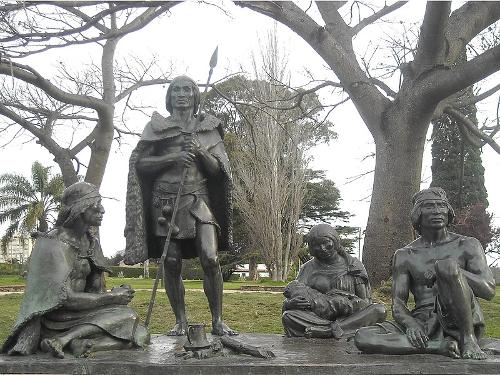 Monument to the Charrua, the first inhabitants of UruguayPhoto: Maximasu CC 3.0 Unported no changes made
Monument to the Charrua, the first inhabitants of UruguayPhoto: Maximasu CC 3.0 Unported no changes made
Archaeological finds of the first inhabitants indicate that people lived in this area as early as 8,000 years ago. The very first inhabitants of Uruguay included the Charrúa, a people of hunters, fishermen and gatherers. They were very hostile to the Spanish explorers and conquistadors. They survived Spanish rule into the 19th century and even played an important role in the struggle for independence.
Other tribes that lived here at the time of the Spaniards were the Chaná and the Guaraní. However, they soon disappeared when the Spanish colonized the country. It is believed that around 1500, at the time of the first contact with the Europeans, about 9000 Charrúa and 6000 Chaná and Guaraní lived in Uruguay.
There were three main reasons why the Indian population disappeared from Uruguay: massacres, merging with the Spanish occupiers and most importantly the diseases that the Spaniards brought with them from Europe such as smallpox, tuberculosis and the flu. In 1840 only 18 Charrúa lived in Uruguay.
Spanish rule
The Spaniards discovered the Río del Plata as early as 1502, but did not investigate the area further. One of the first to investigate the area was the Spaniard Juan Diaz de Solís who, along with most of his men, was murdered by the Indians in 1516. Because no gold or other precious minerals were found, it took until the 17th century before the Spaniards colonized Uruguay.
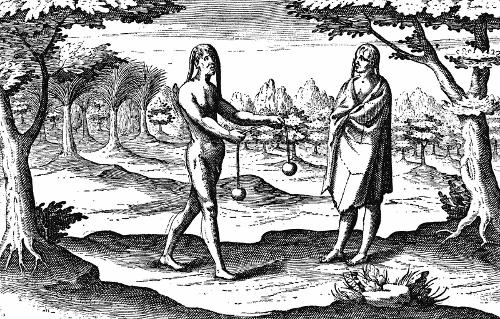 Charruas near the Rio de la Plata, UruguayPhoto: Public domain
Charruas near the Rio de la Plata, UruguayPhoto: Public domain
In the 17th century, the Charrúa had meanwhile taken over horses from the Spaniards and kept large herds of wild cattle with which they even traded. At present, the Charrúa no longer exist as a tribe, and only a few mestizos still live inland along the Brazilian border. The first Europeans to settle in the Banda Oriental, as Uruguay was called during the colonial period, were Jesuit missionaries. This was near present-day Sorianoac de Río Uruguay. In 1680 the Portuguese founded Nova Colõnia do Sacramento, opposite Buenos Aires in Argentina. The Río de la Plata lies between these two places. Colõnia soon became a smugglers' nest and therefore a direct danger to the Spaniards. In response to this, the Spaniards built their own fortress where the capital Montevideo would later emerge. The rivalry between Spain and Portugal would eventually lead to Uruguay's independence.
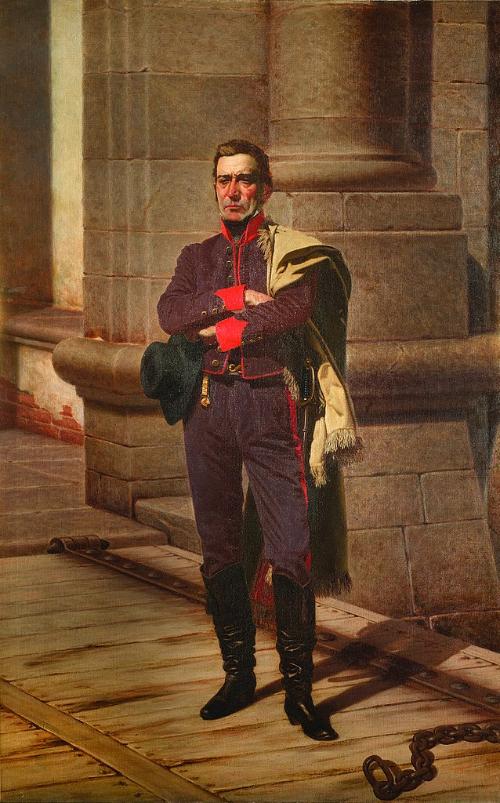 Charruas near the Rio de la Plata, UruguayPhoto: Public domain
Charruas near the Rio de la Plata, UruguayPhoto: Public domain
José Gervasio Artigas, Uruguay's greatest national hero, teamed up with the United Provinces of the River Plata against Spain. The Portuguese, called to the rescue by the Spanish commander, drove Artigas to Paraguay. After this, Uruguay was occupied by Brazil and incorporated as a province of Brazil. The Brazilians then called Uruguay the Cisplatine Province. Gervasio Artigas was expelled to Paraguay, where he inspired the “33 Orientals” led by General Juan Lavalleja and with the help of Argentina tried to liberate Banda Oriental from the Brazilians.
Uruguay independent!
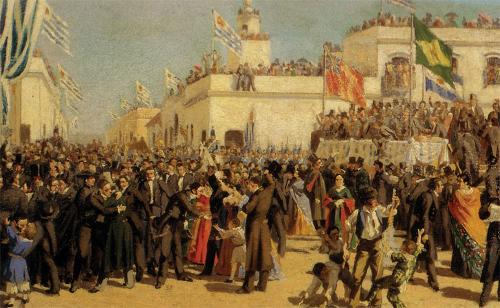 Proclamation of the Constitution in 1830, UruguayPhoto: Public domain
Proclamation of the Constitution in 1830, UruguayPhoto: Public domain
On October 4, 1828, after three years of struggle, Uruguay became an independent state following a British-directed peace deal; in 1830 this agreement was constitutionally ratified. The British intended to use Uruguay as a sort of buffer between the great powers Argentina and Brazil. Throughout the 19th century, Uruguay's independence was threatened militarily by Argentina and Brazil, and economically by the British. Between 1838 and 1851, the capital Montevideo was besieged by federalist troops (Guerra Grande), encouraged and helped by the Argentinian dictator Rosas. The period between 1830 and 1903 was one of great unrest in Uruguay. For example, Uruguay had 25 different presidents between 1870 and 1903. Of these, nine were forced to resign, two were murdered, one was seriously injured, ten survived one or more revolutions and only three presidents had no problems. It was also during this period that the two groups that would later have such a great influence on political life in Uruguay emerged, the blancs and the coloradoes. They were so named because of the color of the headband they wore to distinguish themselves from each other.
After the independence of Uruguay, Great Britain became more and more interested in the country. Great Britain had long been an important market for hides and it expanded further with the introduction of merino sheep. Furthermore, the Liebig Meat Extract Company of London opened a meat factory in Fray Bentos in 1864. In 1868 a company started building a railway from Montevideo to the interior. Later that century, native cattle were replaced by Hereford and Shorthorn cattle. This commercialization of the meat industry and livestock farming meant the end of the romance surrounding the "gaucho", the South American cowboy. They now came to work for the large landowners (latifundios) just like elsewhere in South America. This change did make a major contribution to the development of prosperity in Uruguay.
From 1865, Uruguay, along with Brazil and Argentina, took part in the war against Paraguay (War of the Triple Alliance), which threatened Uruguay's independence. Paraguay lost this war in 1870 at the cost of many deaths.
Social reforms and prosperity
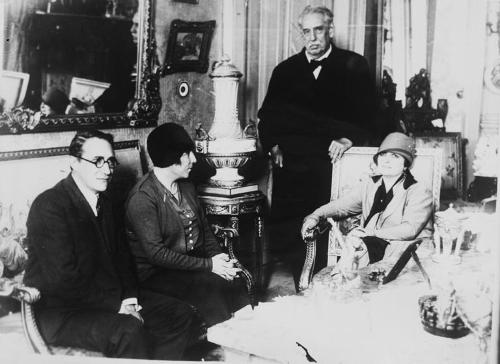 José Batlle y Ordóñez (standing), UruguayPhoto: Public domain
José Batlle y Ordóñez (standing), UruguayPhoto: Public domain
One of South America's most visionary political leaders was the Uruguayan José Batlle y Ordóñez. During two reigns as president of Uruguay (1903-1907 and 1911-1915) he introduced, among other things, the eight-hour working day, unemployment benefits and retirement benefits (Batllismo). He also tried to contain the power of the large landowners (caudillismo) through constitutional amendments. He also created a legislative power on the Swiss model.
This model was called “colegiado” and implied that, instead of a president, a council of wise men formed the day-to-day administration of Uruguay. However, the nationalization of many industries was successful, resulting in a fairly high level of prosperity for a large part of the population for a long time. However, this prosperity depended to a large extent on the growth of meat exports. When there was no more growth in this economic sector, the further development of prosperity quickly ended. A big mistake was also that the money earned was not invested further, but that it was used up on luxurious matters.
Also during the tenures of Claudio Williman (1907-1911) and Feliciano Viera (1915-1919), a number of reforms (social welfare, public utilities, and education transitioned from clergy to laity) were implemented in Latin American relations. that time were very advanced. In general, it can be said that Uruguay was one of the most stable, democratic states in South America in the first half of the 20th century.
Uruguay is slowly sliding into dictatorship
From the middle of the 20th century, the economy stagnated completely and the population of Montevideo in particular suffered greatly, as they were used to the high level of prosperity. All social services cost a lot of money and when the economy collapsed people had no more money to pay for these expenses. Unfair favoritism and corruption further exacerbated the situation. The economic crisis was at its peak in the mid-1960s, resulting in much political unrest.
With the election of Oscar Gestido, a Colorado man, people became more optimistic about the future. However, he died shortly after taking office as president and was succeeded by his vice-president Jorge Pacheco Areco, relatively unknown but with some dictatorial strands. Under Pacheco, Uruguay slowly slid into dictatorship. He banned left-wing parties and certain newspapers and declared a state of emergency several times over guerrilla activities.
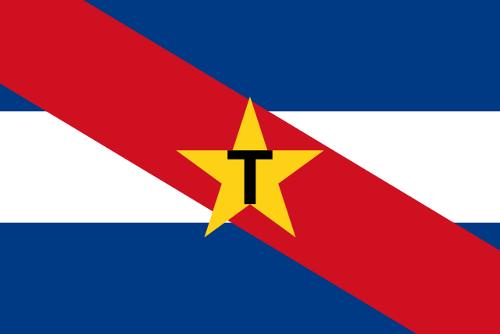 Flag of the Tupamaros, UruguayPhoto: Public domain
Flag of the Tupamaros, UruguayPhoto: Public domain
The main urban guerrilla movement was the Marxist Movimiento de Liberación Nacional, better known as the Tupamaros. This movement had already existed in 1963 under the leadership of socialist law student Raul Sendic, but did not make itself heard until 1967. The name Tupamaros comes from a Peruvian Indian (Tupac Amaru) who led a revolt against the Spanish in the 18th century. In the beginning, the Tupamaros received popular support, but that changed when they were blamed for the excesses carried out by the government. Eventually the army was deployed against the Tupamaros who were finally defeated in 1972.
The 1971 presidential election saw a victory for Pacheco's chosen successor Juan María Bordaberry. Bordaberry invited the military to join the government, eventually leading to a National Security Council. Bordaberry was forced by the army to dissolve Congress in June 1973 and the military dictatorship was a fact. This military dictatorship would last a total of twelve years. The military dictatorship in Uruguay was slightly “milder” than that of Argentina, for example, and was completely out of step with Uruguay's history and political traditions. Yet freedom of speech was severely curtailed and the military assumed all important positions. Torture was the order of the day and about 60,000 civilians were imprisoned in total. There were also Berufsverbote (certain people were not allowed to practice certain professions), libraries were censored, and even large-scale family gatherings had to be approved. A military regime was established in a coup on June 12, 1976. The constitution was inactivated. The main purpose of the military dictatorship was to get the economy back on track. However, it was unfortunate that an oil crisis broke out in 1973 that pushed the country even further into the abyss.
Democracy again after twelve years of dictatorship
In a plebiscite in 1980, the people were asked whether the military role in politics should be legally established. Despite the threat of continued military rule, the majority of the population voted against it. In September 1981, the military leadership appointed former Commander-in-Chief Lieutenant General Gregorio Álvarez president. From June 1982 this allowed the traditional parties to develop political activities again. Finally, politicians and military agreed to hold elections to parliament and a civilian president on November 25, 1984.
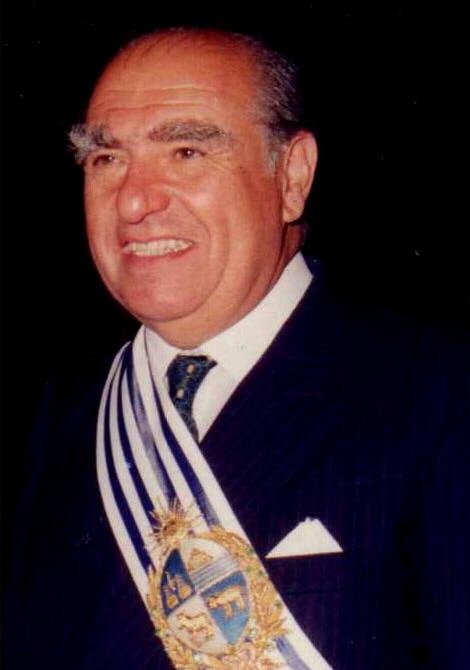 Julio María Sanguinetti, UruguayPhoto: Agmontesdeoca CCA 3.0 Unported no changes made
Julio María Sanguinetti, UruguayPhoto: Agmontesdeoca CCA 3.0 Unported no changes made
The winner of the election was Julio María Sanguinetti of the Colorado Party. Still, there was something fishy about Sanguinetti's victory. The Blank leader Wilson Ferreira Aldunato was boycotted by the military because he had always opposed the military dictatorship and was very popular with the people. Under Sanguinetti, Uruguay slowly returned to its democratic traditions and political and civil rights were restored. It was remarkable that a referendum was held in 1989 asking for an amnesty for “wrong” soldiers. A large majority voted in favor! Later that year, Blanco candidate Luis Lacalle Herrera succeeded incumbent President Sanguinetti. The conservative Lacalle formed a coalition government with fractions of the Colorados, but during his tenure constantly clashed with the municipal government of Montevideo, in which the Frente Amplio was the largest party. Former President Sanguinetti in turn returned to the plush at the head of a coalition government in 1994. In July 1995, an agreement was reached in parliament on a revision of the electoral system, so that from now on each party could only run one presidential candidate. This constitutional amendment was approved by voters in a referendum in December 1996.
In December 1995, a presidential summit was held in the seaside town of Punta del Este of the four countries that are members of the South American Common Market (Mercosur): Argentina, Brazil, Paraguay and Uruguay. At the summit it was decided to admit Bolivia as an associate member and to continue negotiations with Chile.
21st century
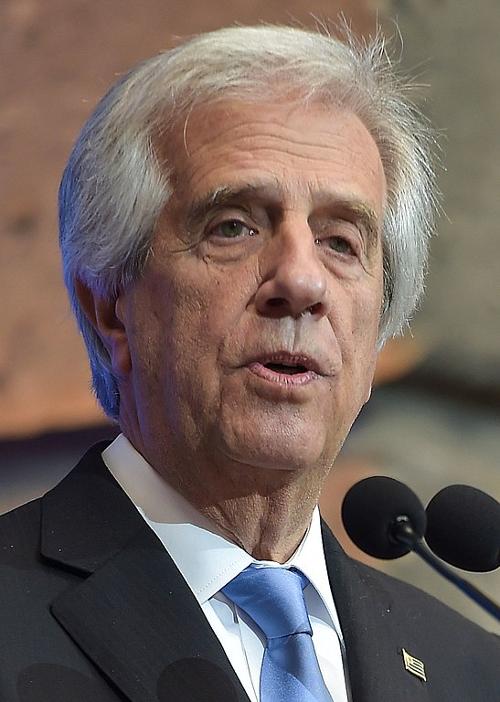 Dr. Tabaré Vázquez, UruguayPhoto: Gobierno de la Repúblic CC 2.0 Generic no changes made
Dr. Tabaré Vázquez, UruguayPhoto: Gobierno de la Repúblic CC 2.0 Generic no changes made
After presidential elections in late 1999, Jorge Batlle Ibáñez was installed as president on March 1, 2000. In March 2005, for the first time in Uruguay's history, a left-wing government was installed under President Dr. Tabaré Vázquez of the Frente Amplio (FA). The transition from a conservative to a progressive regime went smoothly, both in terms of democracy and with regard to the collegial transfer of the departments. In June 2008, Vázquez announced the discovery of a large gas field in the waters off the coast of Uruguay.
In November 2009, José Mujica, former left-wing rebel leader, wins the presidential election. Former President Bordaberry will be tried in February 2010 and will be sentenced to 30 years in prison. In March 2010, Mujica will start as the new president of Uruguay. Uruguay has recently shown its most progressive side. Successively, an abortion law will be passed in October 2012, and same-sex marriage will be legalized in April 2013. In December 2013, Uruguay legalized the cultivation and recreational use of marijuana in the context of the fight against the drug cartels. The new scheme will take effect in April 2014. Tabare Vazquez wins the presidential election in November 2014 and takes office in March 2015.
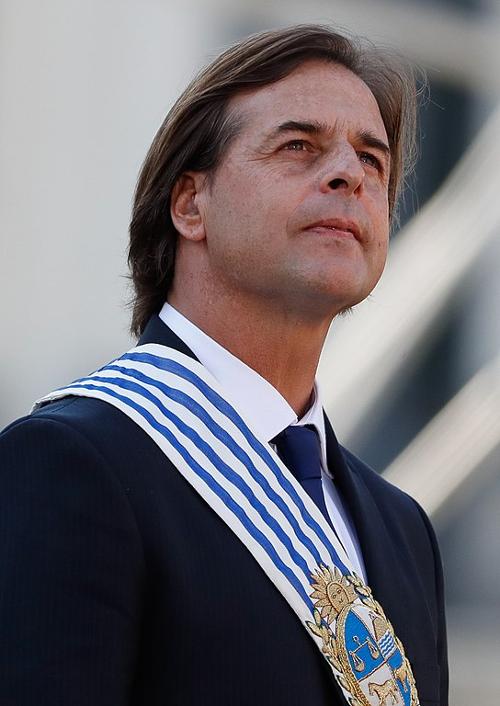 Luis Lacalle Pou, UruguayPhoto: Alan Santos/PRa CC 2.0 Generic no changes made
Luis Lacalle Pou, UruguayPhoto: Alan Santos/PRa CC 2.0 Generic no changes made
In July 2017, Uruguay becomes the first country in the world to make it legal to produce and sell mariunana for recreational use. After the leader of the National Party, Luis Lacalle Pou, won the elections at the end of 2019, he will take office as president in March 2020.
Sources
Bernhardson, W. / Argentina, Uruguay & Paraguay
Lonely Planet
Haitsma, M. / Uruguay: een landenmap
Novib
Jermyn, L. / Uruguay
Marshall Cavendish
CIA - World Factbook
BBC - Country Profiles
Copyright: Team The World of Info